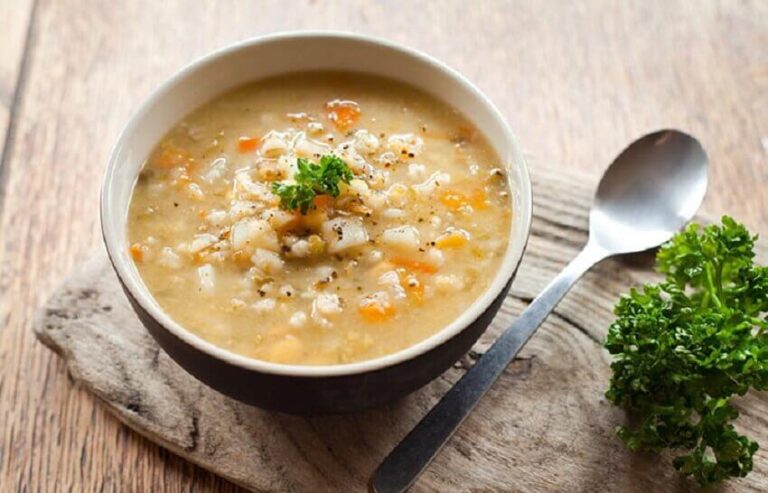Foods with vegetable fiber serve to regulate the digestion process and control the feeling of hunger.
Fiber is an indigestible carbohydrate, so it does not provide calories. Including foods rich in vegetable fiber is recommended in weight loss processes.
This article analyzes the foods with the most plant fiber, what they are for, and why they are good to include on your food list.
RELATED: Fiber Diet – Weekly Menu Sample
Plant Fiber – What is it?
Vegetable or dietary fiber is a complex carbohydrate that cannot be digested by the human stomach.
The enzymes of the human digestive system cannot process plant fiber, so they do not provide calories.
The advantage of eating foods with fiber is giving your stomach more time to absorb the rest of the nutrients and reducing the glycemic index of carbohydrate foods that are digested.
Foods rich in plant fiber help regulate blood sugar levels—something essential for people who have diabetes or prediabetes. Also, dietary fiber is recommended for people who have constipation problems.
RELATED: Soluble Fiber – What Is It And Where Is It Found?
Vegetable fiber foods
The fiber foods par excellence are stalks, whole grains, and vegetable and fruit peels. Plant fiber is the main component of most dense plant structures.
The fiber content in foods is variable. As a general rule, flour, bran, and whole grains: millet, oats, spelled wheat are the foods richest in vegetable fiber. In addition, certain types of mushrooms also fall into this category.
As seen from the list of foods with fiber, wheat bran stands out; the cereal’s husk is pure dietary fiber. The seeds: chia seeds, sesame, flax seeds. As well as, some pseudo-cereals, such as buckwheat and amaranth, contain up to 10-15 of vegetable fiber per 100 g of dry product.
RELATED: Resistant Starch – What is it and what is it for?
List of foods with fiber
Below you can see a list of foods with plant fiber:
| Food | Fiber content in 100 (g) |
| Wheat bran | 40-45 g |
| Flax, chia, sesame seeds | 25-30 g |
| Champignones | 20-25 g |
| Dried fruit | 12-15 g |
| Whole grains and pseudo-cereals (oats, buckwheat, quinoa, millet) | 10-15 g |
| Legumes (lentils, beans, chickpeas) | 9-13 g |
| Pan integral | 8-9 g |
| Berries (blueberries, cherries) | 5-8 g |
| Avocado | 7 g |
| Sweet fruits (Peaches, oranges, bananas) | 2-4 g |
| Carrots | 2-3 g |
Are foods with plant fiber good for weight loss?
Including dietary fiber in the diet ensures the mechanical movement of food through the intestine, which reduces the feeling of hunger. (1)
Dietary fiber physically fills the stomach space, which activates a signal mechanism that the body has to tell the brain enough.
Although it is essential to clarify that a healthy diet should not be based solely on eating foods with fiber at all times but on combining them appropriately.
To lose weight, eating foods with fiber is a good idea. However, limiting sweet foods, desserts, fast foods, and refined flours is critical. All of these are foods that are poor in plant dietary fiber and essential nutrients, and their consumption is related to weight gain.
Recommended amount of fiber per day
The recommended amount of plant fiber per day for children and adults is about 20-35 g (1.4).
In people who practice regular sports; or consume a more significant amount of food, the figure rises to 40 grams of vegetable fiber per day (2). This is the equivalent of 50 grams of chia seeds and 100 grams of whole wheat flour.
The best way to supply the recommended amount per day is to include foods with natural fiber: vegetables, cereals, and fresh fruits. If these foods are not to your liking, you can consist of pharmaceutical supplements with vegetable fiber; these are nothing more than isolated vegetable fiber.
Foods with types of vegetable fiber with special
Some foods with fiber stand out in their nutritional properties. This is an example of oats. The type of fiber in oats is called beta-glucans. This type of dietary fiber is soluble and is associated with unique benefits for the body.
Studies affirm that the regular consumption of foods with beta-glucans can reduce the risk of some types of cancer. (5,6) Also, consuming beta-glucans regularly can lower bad cholesterol and LDL.
What happens if I don’t eat enough of these foods?
The crucial role of plant fiber in nutrition is to improve digestive processes. If you do not eat foods with vegetable fiber, do not hesitate to expect disorders in the digestive system.
This is common in people who carry out an extremely carnivorous diet or have never eaten vegetables and fruits. Another function of plant fiber is to normalize blood glucose levels. Fiber foods allow carbohydrates to be absorbed in a medium and stable rate.
If you do not consume vegetable fiber and add an excess of sugar to your diet, carbohydrate metabolism is likely altered, and diabetes or prediabetes may appear. For this reason, foods with vegetable fiber are recommended in a diet for type 2 diabetics.
ABSTRACT
Plant fiber is a complex carbohydrate that cannot be digested by the human digestive system.
The foods with fiber par excellence are whole grains and pseudocereals, vegetables, seeds, and fruits.
The primary function of vegetable fiber is to improve the digestion process and regulate the rate at which carbohydrates are digested.
Including fiber foods in your diet is not a magic bullet to losing weight. But it serves to reduce the feeling of hunger.
Limiting simple carbohydrates and junk food is as essential to losing weight as adding fiber to your diet.







